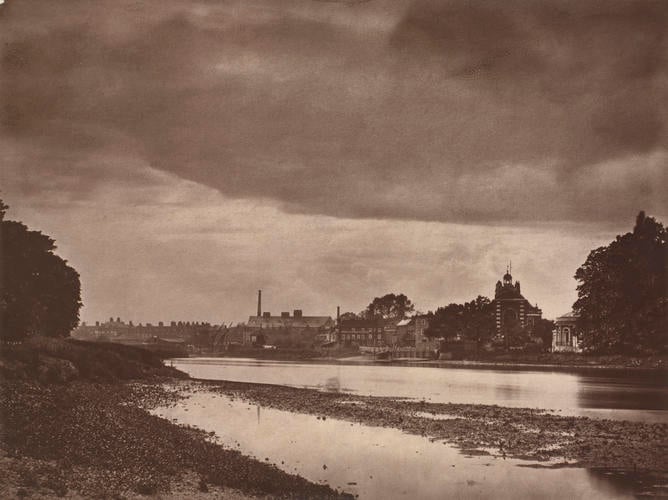-
1 of 253523 objects
Isleworth with natural clouds 1893 copy after 1854 original
Carbon print | 16.3 x 22.0 cm (image) | RCIN 2906206

Frederick Scott Archer (1813-57)
Isleworth with natural clouds 1893 copy after 1854 original
-
Photograph of Isleworth with the River Thames in the foreground and the church of All Saints on the right.
Frederick Scott Archer was born in Hertfordshire in 1813. He was the son of a butcher. Both his parents died in childhood and he was consequently raised by family friends and relations. He developed a passion for the arts and became a sculptor, using the recently invented calotype process to photograph models and capture his completed works. Owing to his frequent bouts of ill health, Archer had developed a relationship with the doctor and photographer Dr Hugh Welch Diamond. It was Diamond who introduced Archer to photography and the calotype process. Archer's interest in photography led to his experimentation with the medium,in his hope to produce a sharper print, requiring relatively short exposure times as compared to the calotype and daguerreotype process. His experiments led to his invention of the collodion process, or wet collodion negative. The process was announced in March 1851 and found to be far quicker, cheaper and produced sharper photographs. The collodion process had a significant impact on the photographic world, leading to the development of the ambrotype process, in addition to increasing the commercial and artistic possibilities of photography. Compared to William Henry Fox Talbot, Archer did not patent the process based on his belief in sharing the medium without restriction. As a result, Archer did not profit from his invention. Throughout the 1850s, Archer was an active member of the Photographic Society and regularly exhibited. Despite his work, Archer died in poverty in 1857 and was buried in an unmarked grave in Kensal Green cemetery, London. In the same year, the Photographic Society established the Archer Fund to raise money for Archer's widow and three children. Upon hearing of his death, Queen Victoria gave 20 guineas to the Fund. The Society followed with a donation of £50. The Fund ultimately raised £747. In 1858, Archer's widow died leading to renewed calls for funds to be placed in Archer Fund to provide for his children. The Earl of Derby agreed to an annuity of £50. In May 2010, the Collodion Collective installed a marker on Archer's grave, acknowledging his great contribution to photography.Provenance
From an album of photographs collected and arranged by Prince Albert
-
Creator(s)
(photographer)Acquirer(s)
-
Medium and techniques
Carbon print
Measurements
16.3 x 22.0 cm (image)
Category
Object type(s)